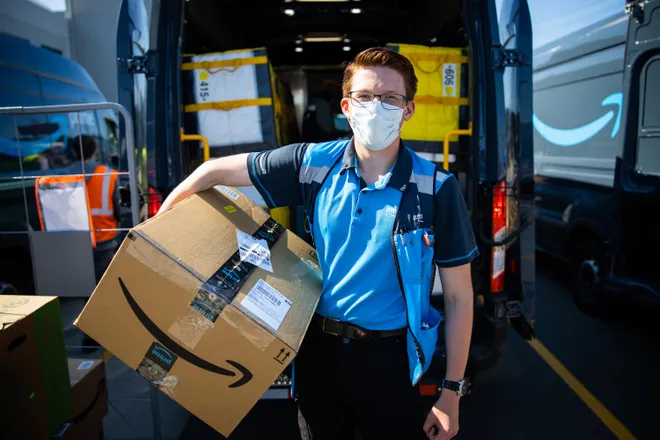
Amazon’s two-day Prime Day event certainly hit its prime, as online shoppers spent a record-setting $14.2 billion, up 11% from last year, according to sales tracking data from Adobe Analytics.
Each day of the online event – Tuesday, July 16, and Wednesday, July 17 – online spending in the U.S. tallied $7 billion, according to Adobe’s analysis which tracks online transactions, covering more than 1 trillion visits to U.S. retail sites. (Adobe’s spending data is aggregated and anonymized, so it doesn’t directly track Amazon’s sales, but suggests demand for the Prime Day deals.)
Nearly half of all online purchases (49.2%) were made on mobile devices – compared to desktop computers – up 18.6% over a year ago, according to Adobe Analytics.
Amazon did not release a sales figure, but said this had been its biggest Prime Day shopping event ever, with record sales and more items sold than any previous Prime Day. In the three weeks ahead of the shopping event, millions of new members joined Amazon Prime, Amazon says.
That helped spur the event’s success, the company said. A subscription to Amazon Prime costs $14.99 per month, or $139 per year; perks include free same-day delivery and free two-day shipping, plus Prime Video, Amazon Music and more.
“Prime Day 2024 was a huge success thanks to the millions of Prime members globally who turned to Amazon for fantastic deals, and our much-appreciated employees, delivery partners, and sellers around the world who helped bring the event to life for customers,” said Doug Herrington, CEO of Worldwide Amazon Stores, in a statement.
Amazon Prime Day: What did we buy?
Nearly half of all online spending during Prime Day was on electronics, clothing and furniture – categories that had seen “low single digit growth in the first half of 2024,” said Adobe Digital Insights lead analyst Vivek Pandya in a press release. The company predicted online sales durin Prime Day of $14 billion.
“It’s clear now that the Prime Day event has been a catalyst across these major categories, with discounts deep enough for consumers to hit the buy button and upgrade items in their homes.”
A closer look at spending during Prime Day, according to Adobe Analytics:
- Back to school: Sales of backpacks, lunchboxes, stationery, and other school and office supplies were up 216% across both days, when compared to daily sales levels in June 2024.
- Apparel: Purchases of children’s clothing rose 165%. Sales of suits were up 36%; increases in outerwear sales (19%), footwear (17%), and accessories (17%).
- Electronics: Overall sales of electronics rose 61%. Especially hot were tablets (up 117%), televisions (111%), headphones and Bluetooth speakers (105%), fitness trackers (88%), computers (80%), smartphones (71%), and cameras (60%).
- Furniture and appliances: Leading the way, were small kitchen appliance sales, which increased 76%. Kitchenware and cookware rose 25%; also rising were mattresses (up 21%), home office furniture (14%), and bedroom furniture (11%).
How much did Americans spend on Prime Day?
The average order size on Prime Day 2024 was $57.97, according to research firm Numerator, based on its survey of 93,513 Prime Day orders from 35,588 unique households July 16-17.
More than half of the households tracked (60%) placed more than two separate orders, bringing the average household spend to about $152.33.
The top five items purchased, according to Numerator: Amazon Fire TV Sticks, Premier Protein Shakes, Liquid I.V. Packets, Glad Trash Bags, and COSRX Snail Mucin Serum.
Shoppers were restrained on their purchases, tending to opt for “small indulgences and everyday items,” said Numerator analyst Amanda Schoenbauer in a statement. “Shoppers purchased fewer big-ticket items than we’ve seen in past years, and fewer participants placed multiple orders throughout the sale, indicating a shift to more conscious shopping and a preference for saving over splurging.”





























